Menu
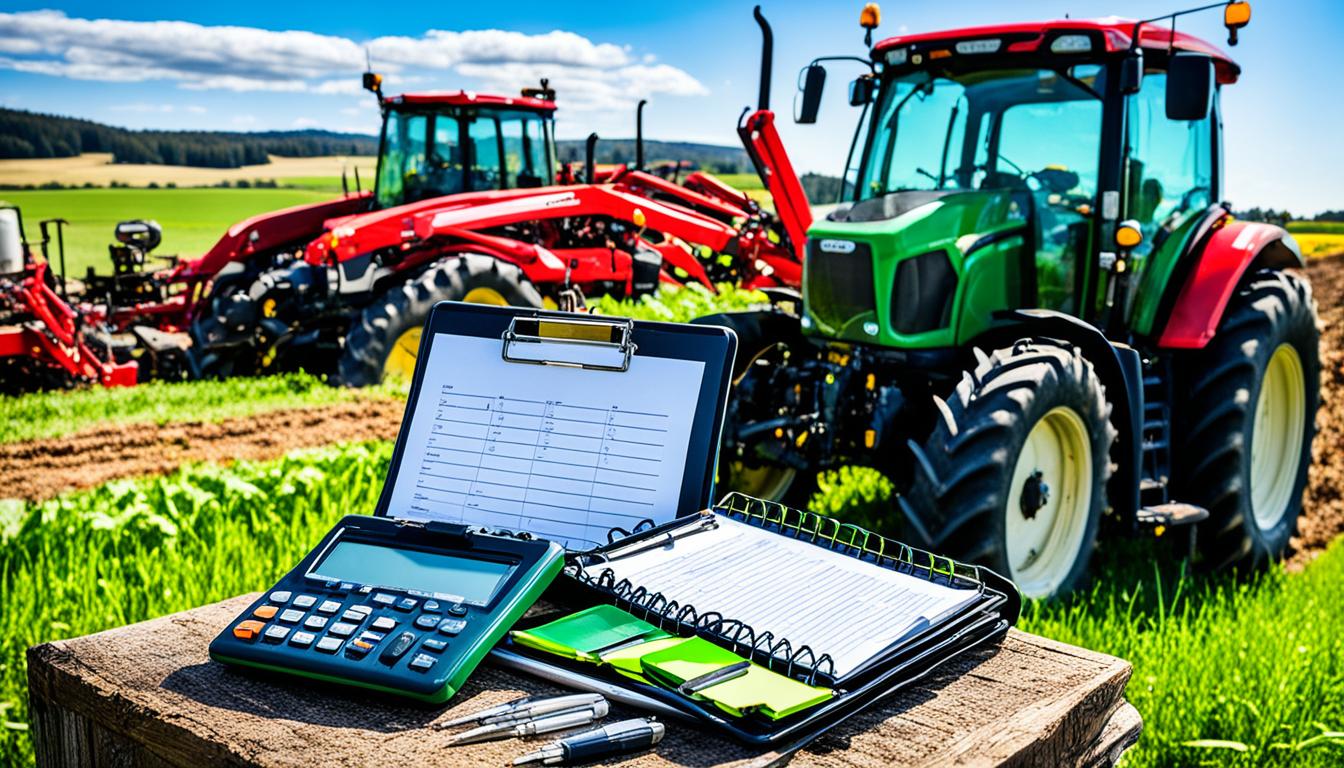
Despite having many ways to prevent farm accidents, they still happen often. So, why is this?
One answer is to do farm safety audits. These checks help find and fix dangers. They are very important for keeping farm workers safe and making sure farms can keep going. Farm safety audits look at all the risks and check how safe the farm is. This makes sure everything is checked properly.
Farm safety audits are in-depth checks on agricultural setups. They look at worker safety, eco impact, finance, and rules following.Starting a farm safety audit can lower risks and make things run better.
These audits carefully inspect farms to spot dangers. They make sure farms are safe for workers and meet safety laws. This also makes the agricultural field more open and responsible.
| Category | Percentage of Farms (Yes) | Percentage of Farms (No) |
|---|---|---|
| Familiar with OSHA and state regulations | 48% | 52% |
| Familiar with employees’ rights under OSHA | 55% | 45% |
| Displaying legally-required safety posters | 63% | 37% |
Farm safety checks are very important. In the US, 23.4 farm workers die for every 100,000 annually. In Australia, farm jobs are seen as the riskiest in 2021. The fatality rate there is much higher than in other fields.
These checks are key to preventing accidents and staying legal. They help find ways to avoid harm. Plus, they make sure farms meet the laws of places like OSHA, NIOSH, and EPA. This stops problems and keeps the work site safe.
Farming is risky, especially for the 2 million young people working on farms yearly. So, regular farm audits are a must. They protect life and make work better for everyone involved.
Conducting farm safety audits brings many advantages, focusing on preventing farm accidents. These checks closely look at possible dangers. This helps lower the chance of accidents. They also make sure the farm follows all laws, like those about work, animal care, and food safety. Plus, they can find ways to make the farm work better by solving any problems.
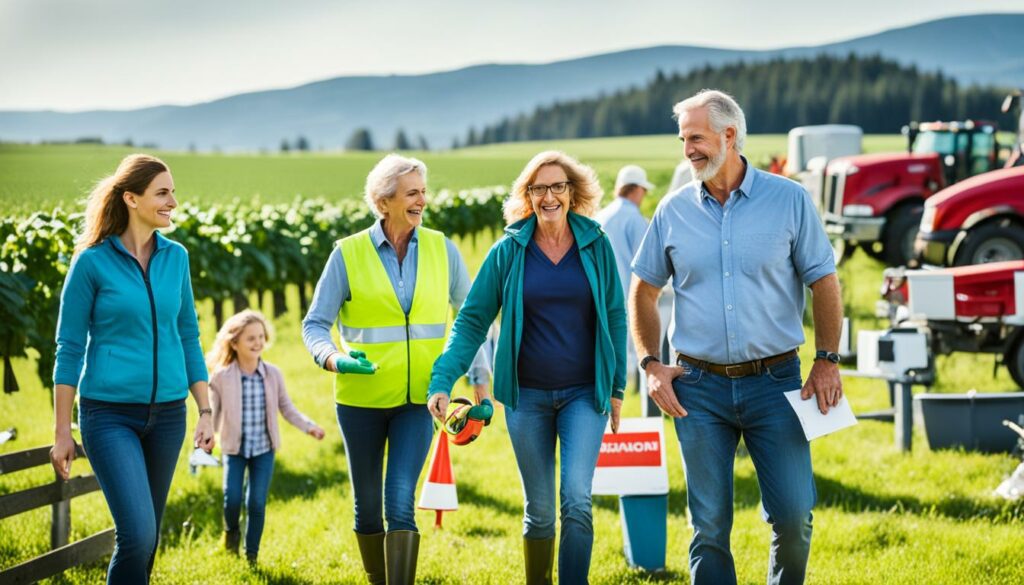
The top benefit is stopping accidents before they happen. These audits take a close look at what could go wrong. This includes looking at dangers with machines, small spaces, and roads. When farms use the advice from these audits, like putting safety equipment on tractors and using clear signs, the risk of accidents drops a lot.
Sticking to the rules is really important. Farm audits make sure the farm does what the laws say, from how people are treated to how animals are looked after, and making sure the food we eat is safe. Doing so helps farms be trusted and respected by everyone.
Farm audits also help farms run better. They find places in the farm’s work that can be improved. By doing this, farms can do things more efficiently and save money. This makes the whole farm more successful in the long run.
| Type of Audit | Focus Area | Key Benefits |
|---|---|---|
| Environmental Audits | Resource management, agrochemical use | Sustainability, reduced environmental impact |
| Compliance Audits | Agricultural laws, labour standards | Legal compliance, enhanced trust |
| Operational Audits | Process efficiency, risk management | Optimised operations, cost savings |
| Financial Audits | Revenue, expenses, assets | Financial health, profit maximisation |
To have a successful farm safety audit, you must know its crucial parts: finding hazards, assessing risks, and taking corrective actions. Each part is vital in making sure farm work is safe and accidents are avoided.
At the start, the focus is on finding potential dangers. This means looking closely at the equipment and how work is done. The goal is to find anything that could be a risk to workers or affect how well the farm runs. Using checklists and looking at past accidents can help with this. It sets a strong base for a good safety check.
Once the hazards are found, the next step is to assess the risks they pose. This means figuring out how likely an accident is to happen and how bad it could be. By ranking risks in order of importance, farms can use their resources better. This step is key in focusing on what’s most critical, helping prevent accidents.
Lastly, there’s putting in place ways to fix the risks. Farms must act on the findings of their risk assessment. This could include making equipment safer, changing work rules, or improving training. The aim is to find lasting solutions that boost safety on the farm. This builds a culture where everyone works to prevent accidents.
Below are the common tasks for each farm audit type:
| Type of Audit | Description | Goals |
|---|---|---|
| Environmental Audit | Looks at the farm’s effect on nature. | Make sure the farm is green-friendly and meets environmental rules. |
| Compliance Audit | Checks if the farm follows the law and safety rules. | Ensure the farm obeys the law and keeps the public safe. |
| Operational Audit | Assesses how well the farm is run. | Find and fix any ways the farm operation can be better. |
| Financial Audit | Looks at the farm’s money health and practices. | Make sure the farm’s money reports are correct and it’s managed well. |
Starting a farm safety audit is key for all farms. It aims to find and fix hazards. Knowing the steps well helps ensure a full farm health and safety evaluation:
To kick off the audit, start with an initial check. This means finding possible dangers and looking at all parts of the farm. Tractor accidents cause lots of farm deaths and need a close look. Big farms might take days to inspect, but small ones can be done in just an hour. This step is vital because farms have many risks, like machinery and the environment. It’s important for a solid agricultural safety review.

Next, make a detailed safety checklist. It should cover barns, animal spaces, and more. Checking everything regularly stops big problems and accidents. This step is key, especially for dangerous areas like where tractors are used. Proper records keep the farm safe through a consistent farm health and safety evaluation.
Lastly, always watch for new dangers. Keeping an eye on hazards helps prevent accidents. Checking often, especially before busy times, makes sure safety measures work. This check-up keeps the farm safe all the time. It’s crucial for a dependable agricultural safety review.
| Facility | Inspection Frequency | Common Hazards |
|---|---|---|
| Machinery | Before planting/harvesting | Roll-overs, entanglements |
| Grain Handling | Before harvesting | Suffocation, engulfment |
| Chemical Storage | Quarterly | Leaks, spills |
| General Farmstead | Monthly | Slips, trips, falls |
Tractor safety is key in keeping farms safe. Tractor accidents are a big issue, causing harm and even death. Farmers must know and address the risks to stay safe.
It’s important to know common tractor dangers to up safety. Tractors can tip over, crush people, or catch them in their parts. The National Institute for Occupational Safety and Health says tractor incidents are the top farmer killer. Most of these are rollovers, often sideways.
Runovers happen when a tractor hits a person. This can occur when someone is not seen or during unclear reversing. In Saskatchewan, many deaths result from this. For instance, operators might get hit while starting the tractor from the ground.
Getting caught in a tractor’s moving parts is another huge risk. It can cause severe harm or even death. Good guarding and checking machinery often can avoid these tragedies.
Keeping tractors safe involves strict checks and safety rules. Regular checks and good repair prevent many accidents. Following the maker’s maintenance guide cuts down dangers.
Drivers need detailed training to avoid accidents. This includes using seat belts and knowing their working area. The Occupational Safety and Health Administration says many accidents happen due to carelessness.
| Hazard Type | Description | Prevention Measures |
|---|---|---|
| Rollovers | Tractor tipping over on its side or roof | Use of rollover protection structures (ROPS), seat belts |
| Runovers | Tractor running over an individual | Proper spotting when reversing, training on awareness |
| Entanglements | Getting caught in moving parts | Ensuring proper guarding, regular part checks |
Adopting these safety strategies improves farm safety. The Tractor Module in Farm Safety Audits helps in spotting, grading, and fixing these dangers. This integration boosts tractor safety in farm checks.
To make farm safety audits work, we need a smart and all-inclusive plan. A solid agricultural safety review should use detailed methods fitting today’s farming world.
Everyone, from workers to bosses, must join the auditing process. They all need to talk about what they see and worry about. This teamwork leads to a true and useful farm risk assessment. Good talking makes sure everyone gets why certain risks are found and how to fix them.
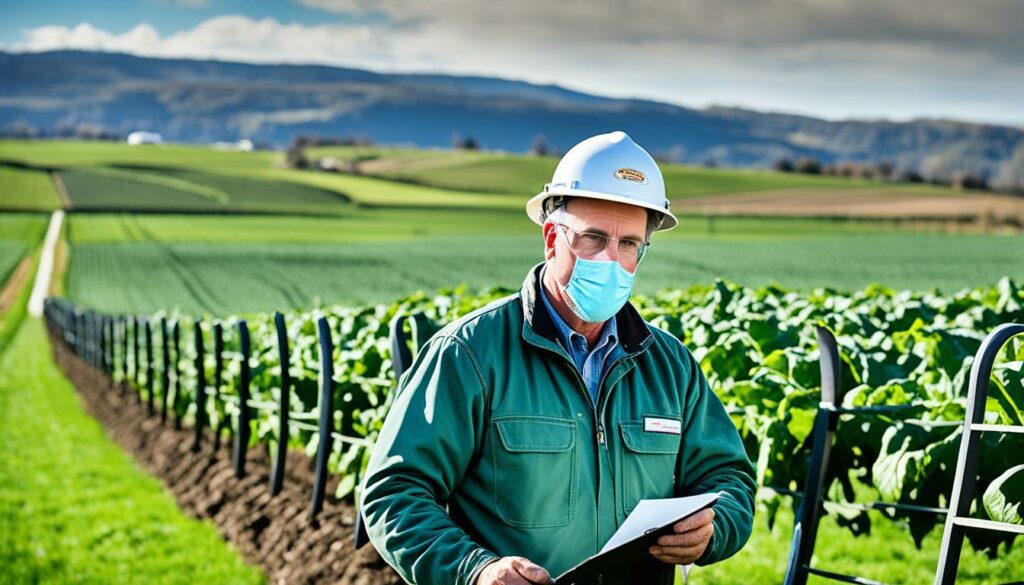
Keeping things in order is key. By using clear checklists and rules, a proper agricultural safety review is done. These checks should happen often, helping find and solve risks fast. Regular checks make sure new dangers are handled quickly, keeping the farm safe for everyone.
Making safety a big deal on the farm is very important. It means putting safety first, listening to suggestions, and praising those who follow safety steps. This way, we stop accidents by making safety part of our everyday tasks.
Teaching and learning are very important. Making sure everyone knows how to be safe with tools, chemicals, and animals is a must. Wearing the right personal protective equipment (PPE) really helps lower the danger from poisons and heavy machines.
Checking if safety rules are being followed regularly is a must. Rules from places like OSHA in the U.S. or HSE in the UK show us the way to do things right and legally. Following these rules means we keep our farm safer and follow the law.
Evaluating a farm’s safety is key to knowing what’s working and where to improve. A complete farm health and safety evaluation and a farm workplace safety check look at everything. This includes how well safety rules work, the state of buildings and tools, and how well people are trained.
A proper farm workplace safety check also looks at specific things:
| Check | Percentage of Farms |
|---|---|
| Written Safety Plans | 67% |
| Scheduled Safety Inspections | 44% |
| Initial Employee Safety Training | 71% |
| Refresher Training Post-Incident | 56% |
| Use of Safety Program Indicators | 29% |
| Regular Review of Indicators | 42% |
A thorough evaluation makes sure safety meets the law and farm goals. Doing regular farm health and safety checks and farm workplace safety checks is the mark of a good farm.
The most important phase of a farm safety audit is implementing corrective actions. This step involves making plans based on what needs fixing first. By tackling the biggest risks initially, a farm can slash dangers and make it safer for everyone.
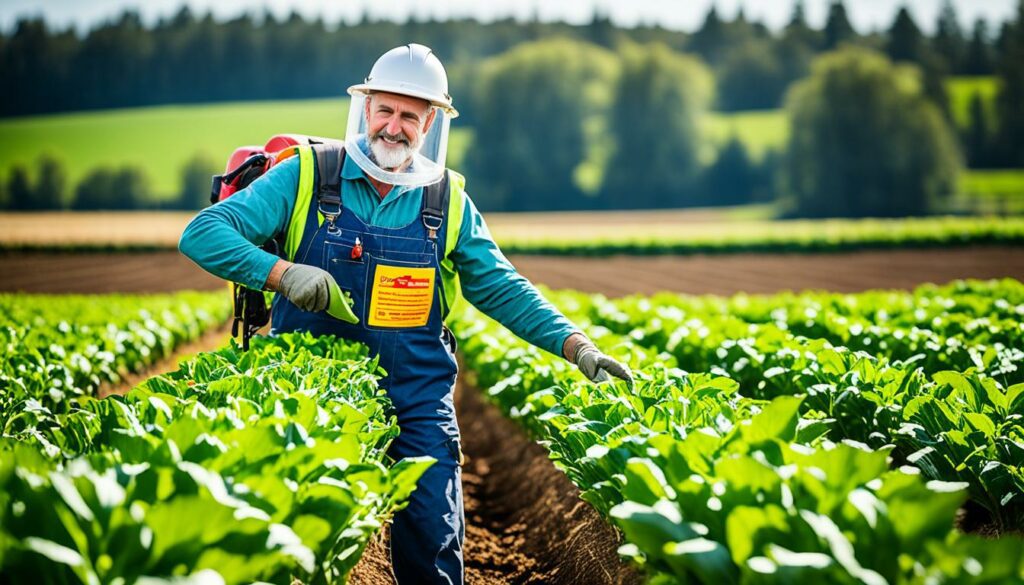
The first thing to do is carry out a farm risk assessment thoroughly. This means finding and sorting all the dangers. We can use technologies like IoT for checking risks in real time. It’s also crucial to involve everyone who matters in deciding what to do. This way, the actions taken will be both doable and effective. The planning should put the focus on dealing with the most serious risks first. This approach helps reduce accidents on the farm.
We have to know the difference between what needs to be done right away and what can be sorted out over time. Quick, short-term fixes may include fixing machines immediately or giving out protective gear fast. These steps aim to deal with emergency safety issues. On the other hand, long-term solutions involve things like constant training, regular checks, and using new tech for always keeping an eye on risks.
In the US, for example, 23.4 people out of every 100,000 farm workers died on the job in 2018. This paints a clear picture of why safety must come first. By clearly separating what needs instant action from what can wait, farms can better use their resources. This leads to steady progress in making the farm a safer place.
Getting all workers and family involved in safety on the farm is crucial. It builds a safe farm culture. When everyone helps with checking health and safety, they feel part of it. This sharing of work reduces risks and boosts safety for everyone.
The MOSH in Maryland ensures farms follow safety rules, like the federal law. These rules help farm owners know and fix dangers by checking safety often. This is key for those new to farming, guiding them on safe equipment use and operation.
Back and shoulder problems are a big issue for farmers. Teaching ways to avoid these injuries through short sessions is very helpful. Since farming is risky for around 2 to 4 million people, this teaching is vital.
Being proactive includes keeping young people safe on farms in cities. Penn State Extension states that different ages need different jobs. The law also sets age limits on dangerous tasks for under 16s. Tests for soil poisons like lead protect both young and old.
Mentorship is essential for teaching new farmers safe ways. Experienced farmers share their knowledge on equipment and farm work. This teaching highlights the need for checking for dangers on farms. Also, setting up ways to easily report dangers cuts down on accidents and makes farms safer.
Having strong safety rules not only keeps the law, but it makes farms better places to work. Less work time missed, more work done, happier staff, and less leaving the job are some good outcomes. This shows how important checking health and safety is for running a successful farm.
Adding digital tools to farm safety audits has changed how we do things. Now, we can collect data easily, keep track of it better, and share the results faster. This makes looking for farm risks and checking for dangers in farming more successful than before.
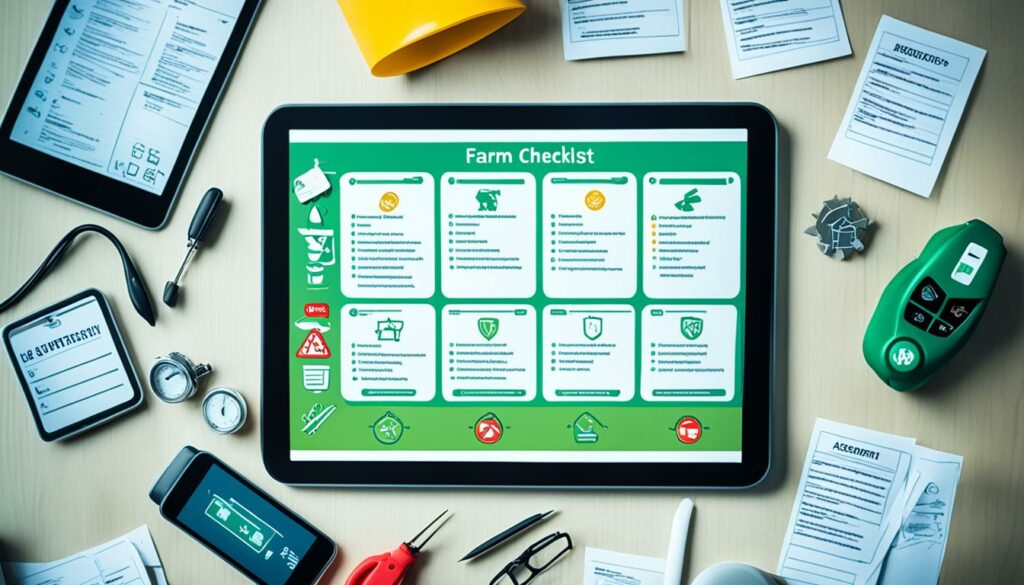
Digital checklists are great because they offer accuracy and consistency. With less chance of making mistakes, we can make sure every risk on the farm is checked. These checklists also allow updates in real time, which helps in sorting out problems quickly.
There are many digital tools that help make farm inspections better. Mobile apps like AgriSafe and FarmPulse are easy to use for entering data and setting up inspections. Programs like CropWise Safety and Agworld give more advanced help, including in-depth data analysis and meeting safety rules.
| Tool | Features | Benefits |
|---|---|---|
| AgriSafe | Real-time data entry, Inspection scheduling, Automated alerts | Enhanced accuracy, Timely updates, Streamlined inspections |
| FarmPulse | Mobile interface, Data tracking, Comprehensive reporting | Easy access, Efficient tracking, Detailed analysis |
| CropWise Safety | Data analysis, Compliance reporting, Inspection management | Detailed insights, Regulatory compliance, Efficient management |
| Agworld | Full audit management, Real-time monitoring, Historical data storage | Unified platform, Continuous monitoring, Long-term tracking |
Using digital tools makes our farm safety checks more precise and faster. Mobile apps and software make it easier to do inspections, helping us find and fix risks. This improves how we assess farm dangers and encourages safer farm work.
Case studies are key for seeing how well farm safety audits work. We’ll look at two big examples. They show how audits changed safety for the better in farms.
Accidents with tractors are a big worry on farms. In Saskatchewan, from April 1990 to March 2000, 66 people died in tractor accidents. There were also 353 injuries serious enough to need hospital care. Shockingly, one out of every four deaths was from a tractor roll-over. Nearly 80% of these were sideways. The rest were backward. A farm workplace safety check was done to make things safer. It focused on adding roll-over protection and better driver training. This farm equipment safety appraisal brought in new safety rules and strict maintenance checks. It all helped cut down on tractor accidents.
Another story is about a major farm that needed big safety changes. It had lots of dangers, like missing guards and hard-to-reach service parts. People were also getting hurt by harmful stuff around. A detailed farm workplace safety check found all these issues. It pushed for a total safety re-think. With regular farm equipment safety appraisals and following the best safety ways, the farm got much safer. This protected the people working there and kept the farm running well.
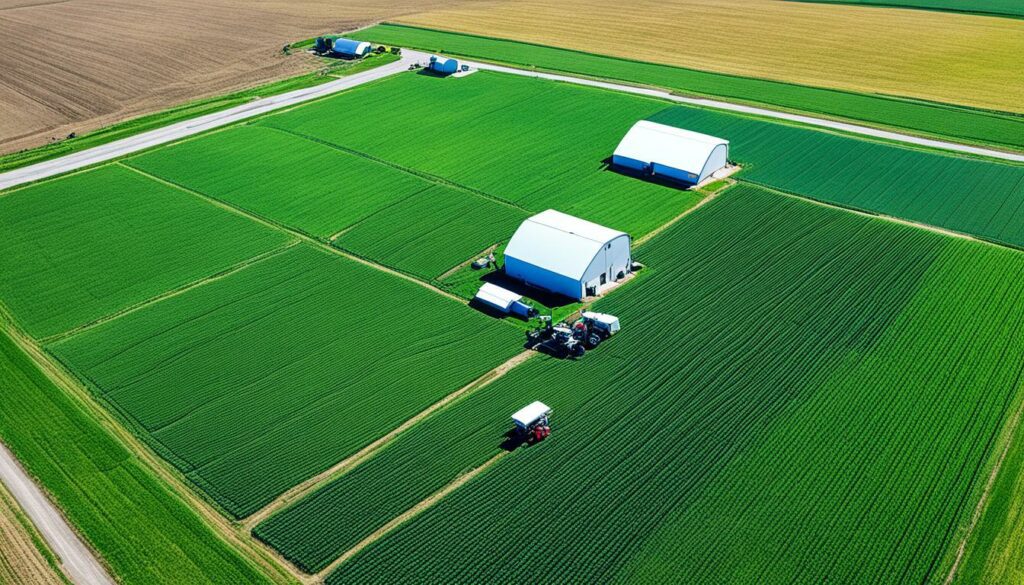
Outsourcing farm safety checks to experts benefits many in farming. These experts provide a fresh view and deep knowledge. They are vital in carrying out strict agricultural safety reviews. Buyers of food or packaging often require these external checks. The aim is to meet top quality and safety rules.
Different parts of the food chain get help from these independent reviews. This includes food makers, ingredient suppliers, and package creators. It also covers transporters, sellers, storers, fresh food prep sites, and farms. Big names in food, like those in restaurants, also choose external checks for their own quality checks. They do this to ensure their suppliers are top-notch.
If government checks fail, it can mean a stop to work or product sales. In comparison, bad results from external reviews could mean losing certifications or purchase delays. This makes ongoing high standards important rather than just one good review. The value of a single check might fade in twelve months.
External reviews look into various important areas. For example, they check sourcing of organic botanicals and do needed visits for validating vendors. The USDA backs organic certifications for their strong standards. Reviewers look at risks and processes with care. They use documents, self-assessment reports, and other records to make their judgements.
Getting sectors like pesticide use, manure handling, and water use right is crucial. Auditors also look at consistent checks like for pesticides and harmful substances. They stress that keeping up these standards along the whole chain is key. This ensures a proper rural safety examination.
Not following farm safety audits can lead to big trouble. These checks are required by law to keep farms safe. Skipping a hazard check or ignoring its results can mean fines or even facing jail time.
Farms are risky, and not being careful can cause legal problems. This includes not following laws and not making loan payments. It can bring orders to stop operations and limits on your finances. For instance, farms in towns must follow strict zoning and other rules.
Getting the right to use land legally is very important for farms. Without it, you can’t farm well and might break the law. Owning land gives strong rights and is good for the future. But, renting land is also secure for a certain time. Licenses are for using land briefly and can be taken back by the owner. Sometimes, you can use land without owning it, like for city farming, this is called an easement.
There are special rules, like the Produce Safety Rule, which farms must follow by certain dates. Large farms had to meet these rules by January 26, 2018, for example. Not following these can really harm the farm’s reputation and how well it operates. So, it’s really important to regularly check up on farm safety.
Creating a sustainable farm safety culture is key to long-term farm safety and success. It includes firm training, regular safety talks, and always getting better. I will dive into these aspects in support of good health and safety on farms.
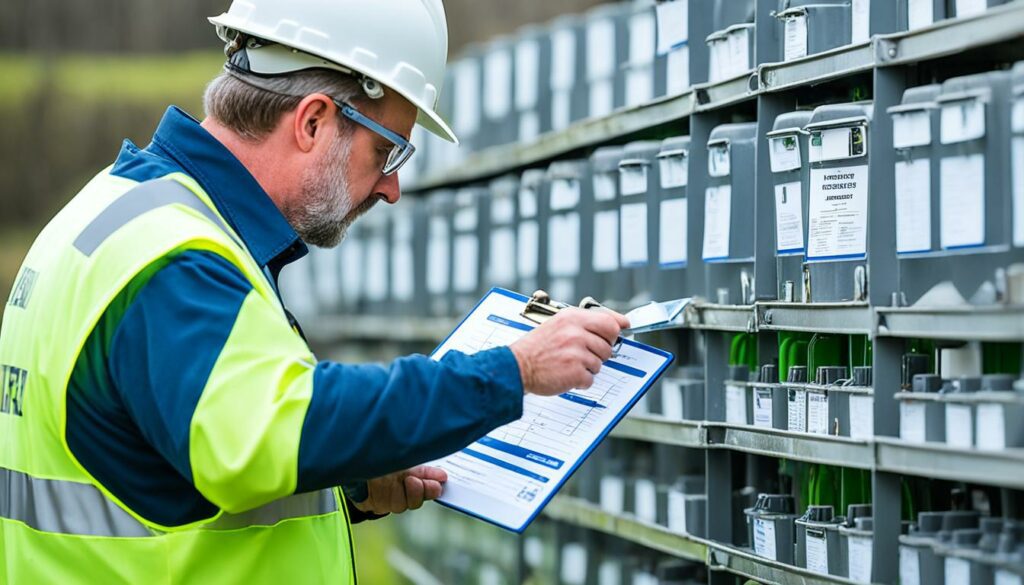
Training and education are crucial for a safe farm. All farm workers must learn about safety, including part-time and seasonal staff. They need to know the dangers of pesticides, working with machines, and handling animals. Ongoing education keeps everyone current, reducing accidents and promoting safety. Refreshing safety courses helps keep safety top of mind for everyone.
Having safety meetings often helps keep safety a top priority. Workers can talk about close calls, accidents, and dangerous things they’ve seen. This sharing environment lets everyone share their concerns and help improve the safety plan. By updating safety rules in these meetings, the farm stays current on preventive measures.
Striving for better safety is the heart of a sustainable farm safety approach. Regular checkups on farm health and safety are key to success. These checkups help understand how current safety measures are working and where they can be better. Always looking to improve means farm safety will grow to fight new challenges and lower risks.
These efforts are vital for farm safety in the U.S. and Australia too:
| Country | Annual Fatalities | Major Risks | Protective Measures |
|---|---|---|---|
| U.S. | 23.4 deaths per 100,000 farm workers | Machinery accidents, chemical exposure, livestock-related injuries | Regular equipment inspections, PPE usage, safety training |
| Australia | 79 farmer deaths on average | Vehicle incidents, machinery use, severe weather | Machinery safety checks, weather monitoring, comprehensive training |
By making these strategies a part of daily life, farms can be much safer. Good health and safety evaluations and sticking to safety checks are vital. This ensures farm safety always keeps moving forward.
In closing, we see how farm safety checks aren’t just rules to follow. They are key in making farms safer and better places to work. With in-depth safety checks, we protect the people who work hard in agriculture. For example, having rollover bars on tractors makes a big difference in life and death when they flip over. This shows how focusing on safety can really save lives.
Now, there are cool new tools like warning sensors and clear signs on country lanes to help keep everyone safe. Making farms safe is about more than spotting danger. It’s fixing it too. Like having safe entry rules for tight spaces and giving gear to the Fire Department. This kind of work is crucial for getting ready for emergencies.
Doing regular safety checks, with farm owners and officials, helps keep up with the safety rules. However, recent numbers from Australia show farming is still risky, with 24 deaths in just half a year. So, these checks, backed up by groups like Worksafe, are there to remind everyone of the big fines for not following the rules – up to $150,000. This shows how important it is to always work towards making farms safer and better, not just for now but as a way of life.
A farm safety audit evaluates agricultural operations. It looks at everything from the environment to finances. It checks equipment, how things are done, and safety rules. This is to find out where there might be risks and to make sure rules are followed.
They are key for preventing accidents and following rules. Audits make the farm run better. They check if the place is safe for people who work there. This includes making sure the work areas and tools are safe.
Audits reduce accidents, confirm rule adherence, and boost farm efficiency. By examining risks through checks, they make jobs safer and improve how the farm runs.
A farm safety audit looks for risks and finds ways to deal with them. It works by spotting dangers and figuring out how bad they could be. Then, it comes up with ways to make things safer.
Start by looking for any dangers and checking how things are done. Make a list of safety checks for regular use. Keep checking things to make sure they stay safe, fixing issues as they pop up.
Tractor dangers include flipping over, hitting people, and them getting stuck in tools. Make sure tractors are well kept and used correctly to lessen these dangers. Audits must look closely at all tractor equipment.
Start by involving everyone and making sure they know what’s happening. Be clear about what needs checking. Keep at it regularly, using the right tools and methods.
Look at how the farm keeps people safe and where it can do better. Check the rules, the state of tools and buildings, and how well people are trained. This helps find places to improve.
Start by fixing the most pressing issues. Then, work on making things better for the long term. This step makes sure the dangerous things go away first. Keep improving safety over time.
Get everyone involved in making the farm safer. Tell them about the risks and how to avoid them. Acts like checking for dangers together builds a safer place for all.
Digital tools make safety checks easier. They help gather data, keep track of checks, and share results more smoothly. Look for apps and software designed especially for farm safety.
Yes. There are cases where farm safety checks have made a big difference. They might show how tractor safety was made better or how a farm as a whole got safer. These stories highlight the gains from focusing on safety.
Outsourcing to experts can bring in new ideas and more skills. They might see dangers others miss. But, it’s essential to pick auditors who know the farm world well and do audits right.
Not doing safety checks can lead to big fines and more responsibility. If an accident happens because checks weren’t done, it can hurt the farm’s name and how it runs.
Everyone must know how to be safe on the farm. Keep teaching and talking about safety. Regular safety checks and meetings help everyone stay on top of safety.